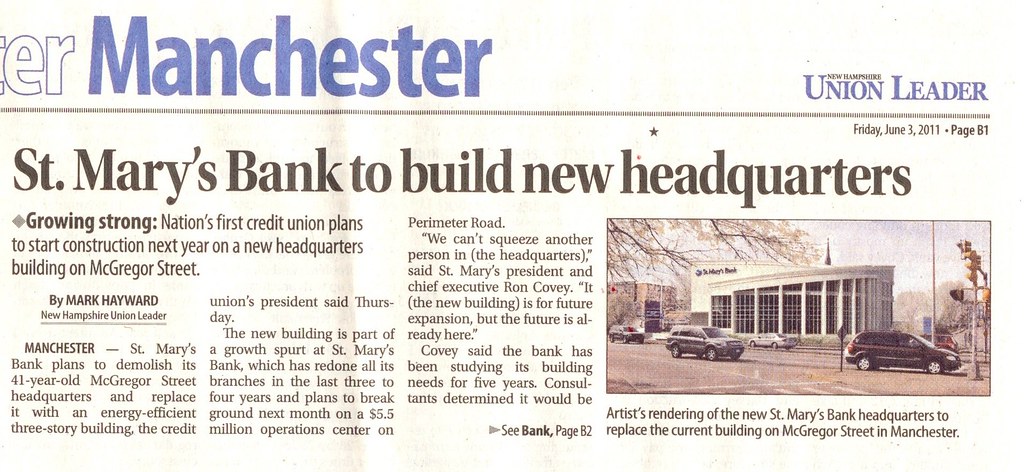FrankLloydMike
Active Member
- Joined
- Jun 24, 2010
- Messages
- 514
- Reaction score
- 0
I'm planning to take a look on LivableMHT at how the West Side of Manchester might be improved, and I'm hoping to get feedback and thoughts to incorporate throughout. I also figured that with the recent projects like the CMC expansion and Rimmon Heights neighborhood revitalization, as well as possible and ongoing projects like Granite Landing and the Mill West apartments, the West Side could use its own thread on here.
Here are some images of the West Side:

Flat Iron District, Notre Dame from ~1940s seen from Simpson Park & Coolidge Ave; one of the towers of Mill West is visible in the background

Present view of the West Side from Downtown with Mill West in the foreground & the Uncanoonucs in the background; Pariseau tower is the beige high-rise at the right; CMC is the lower, beige-ish building to the left; in between Ste. Marie's tops the plateau of Rimmon Heights w/ Lafayette & Simpson parks sloping down the hill between it and shopping plaza where the Flat Iron District previously stood

Recent view of CMC parking garage & Notre Dame Pavilion medical offices nearing completion with CMC & the Rite-Aid shopping plaza on the opposite side of McGregor Stret; St. Mary's Bank headquarters is the two-story building in front of the plaza; all the newer parts of CMC, the shopping plaza and the bank were where the Flat Iron District was previously

Present view of Lafayette Park looking over the roof of the shopping plaza with Mill West & downtown visible in the background

New arches on Kelley Street and Amory Street; this one is at the intersection of Kelley Street & Coolidge & Notre Dame Aves; the brick building is the old St. Patrick's school, being converted to office use

A recently renovated mixed-use building along Kelley Street, which is a good example of what could be done with other properties along the street; I believe the streetlights have since been replaced with more decorative fixtures
Here are some images of the West Side:

Flat Iron District, Notre Dame from ~1940s seen from Simpson Park & Coolidge Ave; one of the towers of Mill West is visible in the background
Present view of the West Side from Downtown with Mill West in the foreground & the Uncanoonucs in the background; Pariseau tower is the beige high-rise at the right; CMC is the lower, beige-ish building to the left; in between Ste. Marie's tops the plateau of Rimmon Heights w/ Lafayette & Simpson parks sloping down the hill between it and shopping plaza where the Flat Iron District previously stood

Recent view of CMC parking garage & Notre Dame Pavilion medical offices nearing completion with CMC & the Rite-Aid shopping plaza on the opposite side of McGregor Stret; St. Mary's Bank headquarters is the two-story building in front of the plaza; all the newer parts of CMC, the shopping plaza and the bank were where the Flat Iron District was previously

Present view of Lafayette Park looking over the roof of the shopping plaza with Mill West & downtown visible in the background

New arches on Kelley Street and Amory Street; this one is at the intersection of Kelley Street & Coolidge & Notre Dame Aves; the brick building is the old St. Patrick's school, being converted to office use

A recently renovated mixed-use building along Kelley Street, which is a good example of what could be done with other properties along the street; I believe the streetlights have since been replaced with more decorative fixtures







